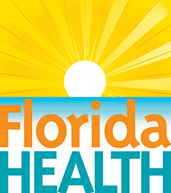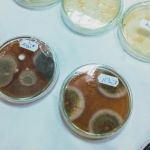It's a New Day in Public Health.
The Florida Department of Health works to protect, promote, and improve the health of all people in Florida through integrated state, county, and community efforts.
Florida's Environmental Hazards
Contact: Florida Health
- 850-245-4444
- health@flhealth.gov
-
Mailing Address
Florida Health
4052 Bald Cypress Way
Tallahassee, FL 32399
| |||
Environmental Health Hazards in Florida
Florida's diverse ecosystems and dynamic industrial landscape create a complex web of environmental challenges that impact public health. The state's warm, humid climate not only supports vibrant natural beauty but also fosters conditions that can lead to mold growth, chemical spills, and hazardous waste incidents. This guide is organized into dropdown sections that delve into each hazard, offering insights into health impacts, prevention strategies, and trusted resources.
Explore the sections below to gain a comprehensive understanding of these issues and learn practical steps to safeguard your well-being and that of your community.
- Mold & Fungal Growth
- Chemical Spills
- Hazardous Waste
- Additional Environmental Challenges
- Staying Informed & Prepared
- Trusted Resources
Health Impacts:
Exposure to mold spores may cause allergic reactions, respiratory problems, and exacerbate conditions such as asthma, particularly among vulnerable populations.Prevention & Remediation:
Prompt repair of water damage, ensuring proper ventilation, and regular cleaning are crucial to reducing mold growth. For more detailed guidance, refer to our dedicated mold and fungus page or consult the CDC’s guidelines on mold safety.
Understanding the Risks:
Accidental chemical releases can contaminate air, water, and soil, posing significant health risks to communities and ecosystems.Response & Safety Measures:
Local and state agencies, in collaboration with federal partners, monitor chemical spill incidents, issue timely warnings, and coordinate cleanup operations. For comprehensive information, consult the EPA’s Emergency Response resources.
Understanding Hazardous Waste:
Hazardous waste consists of materials that pose serious risks if not properly handled. Improper disposal or accidental release can result in widespread contamination and long-term health issues.Proper Management & Cleanup:
Adhering to strict regulatory guidelines and coordinated response efforts is essential for the safe management of hazardous waste. Local agencies, supported by federal oversight, work diligently to ensure that hazardous waste is contained, treated, and disposed of in a manner that protects both people and the environment.
Pollution & Debris:
Industrial emissions, urban runoff, and marine debris can degrade air and water quality. Pollutants from vehicles, factories, and agricultural activities—along with coastal waste—present ongoing challenges for ecosystems and human well-being.Climate-Driven Changes:
Shifts in weather patterns, rising temperatures, and increasing sea levels intensify environmental exposures. These changes can lead to more frequent flooding, extended dry spells, and variable air quality, compounding other health challenges.
Monitor Trusted Sources:
Keep informed with real-time updates from the EPA, CDC, and NOAA.Follow Local Guidelines:
In the event of a chemical spill, hazardous waste incident, or other environmental emergency, adhere to instructions from local emergency management agencies.Maintain Your Environment:
Regular building maintenance, prompt water damage repair, and proper ventilation are essential for minimizing hazards such as mold growth and other environmental threats.
- Environmental Protection Agency: Emergency Response
- Centers for Disease Control and Prevention: Mold Information
- NOAA – National Ocean Service: NOAA Natural Hazards
- Local Emergency Management: Visit your county or city’s emergency management website for regional updates.
Your Role in a Healthier Florida
Protecting yourself from Florida’s environmental hazards means staying informed and taking action. Each section of this guide breaks down the risks—from mold growth and chemical spills to hazardous waste and other issues—in clear, simple terms. By learning about these challenges and using trusted resources, you can help keep yourself, your family, and your community safe. As you explore the dropdown sections, remember that staying alert and following local guidelines are key steps toward a healthier, safer Florida for everyone.
Disclaimer: The links and content provided on this page are for informational purposes and your convenience. The Florida Department of Health (DOH) does not endorse, approve, or guarantee the products, services, or opinions offered on external websites. Furthermore, the DOH is not responsible for the accuracy, content, or availability of these external sites. For questions or concerns, please contact the external site directly.


 Chemical Spills
Chemical Spills Hazardous Waste
Hazardous Waste Mold and Fungus
Mold and Fungus

Connect with DOH